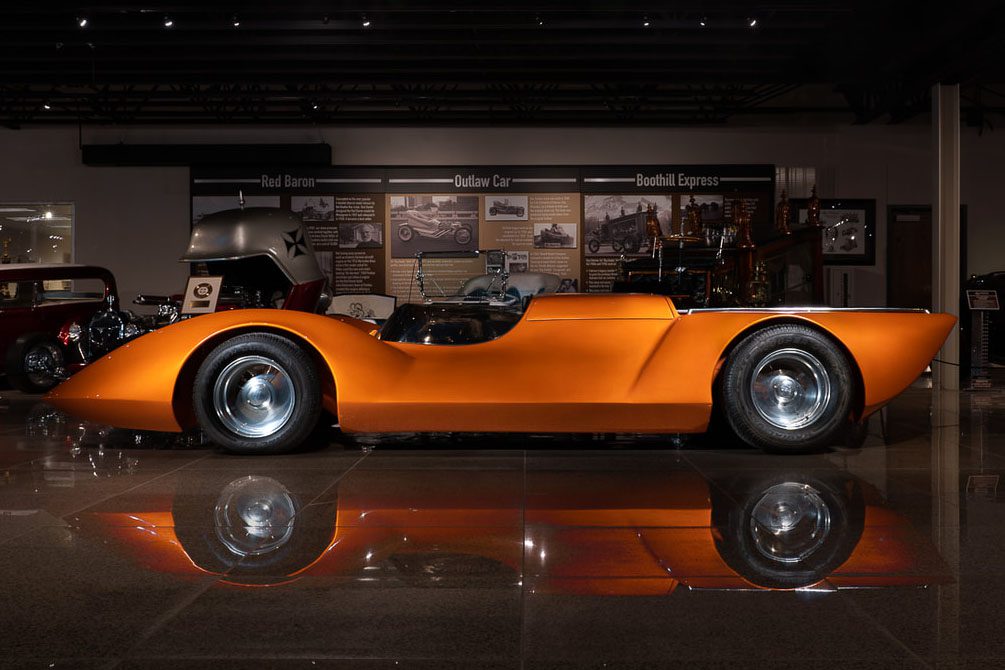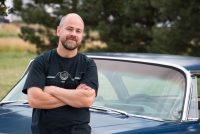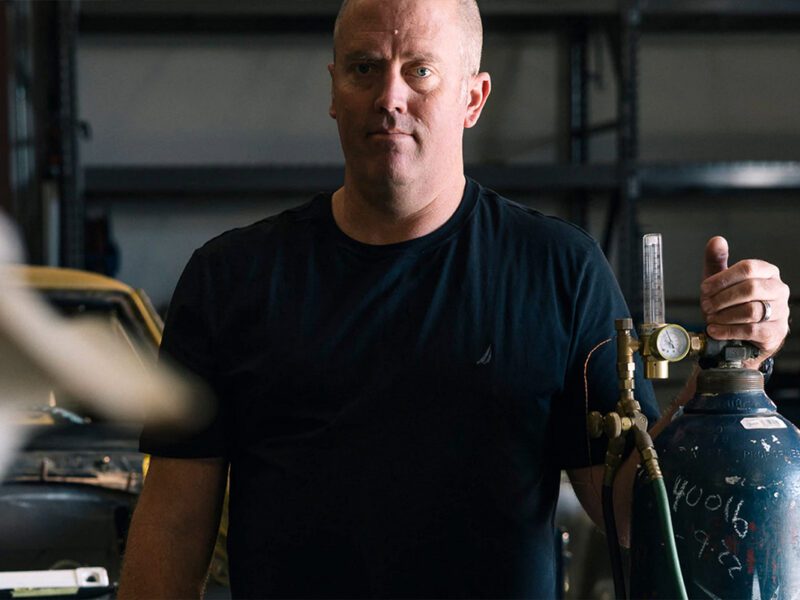5 Minutes With Darryl Starbird
Darryl Starbird is an automotive customizer who, along with peers like Gene Winfield and George Barris, helped popularize the custom car during the 1950s and ’60s, when customs became a widespread part of American culture. He opened his Star Kustom Shop in Wichita, Kansas, in 1954 and garnered national attention in 1958 after one of his creations appeared on the cover of Rod & Custom magazine. A year later he debuted his Predicta, a radical custom showcasing an innovative new feature: a clear bubble top.
In the 1960s, Starbird’s career took off like the rockets his cars emulated, with a string of show cars and scale models keeping him busy in the shop and at car show appearances. He parlayed that success into producing his own car shows, something he did for more than 50 years. His National Rod & Custom show, now run by two of his children, is still held in Tulsa each February.
At age 89, Starbird is slowing a little but still plenty busy. He recently reached an agreement with Speedway Motors to merge his National Rod & Custom Car Hall of Fame Museum with the Speedway Motors Museum of American Speed. And he’s still out in the shop daily, working on new custom projects. We caught up with Starbird – who got name-dropped in the movie “American Graffiti” – to quiz him on his history and see what he’s up to now.
Goodguys Gazette: How old were you when you first learned how to weld?
Darryl Starbird: I would have been about 14. I learned how to braze, actually, acetylene. My father went to work for Boeing during the war, so we had the equipment at the house. I bought and sold old cars; would paint the fenders and fix ’em up a little. I sold so many I finally had to get a Kansas registered dealer license when I was 16.
 GG: What was the first car you customized?
GG: What was the first car you customized?
Starbird: A ’41 Ford convertible in high school. Then I did a ’47 Cadillac. I built it before I had my shop. I still have that car. I found it after many years and bought it back.
GG: When you opened your shop, did you believe you’d be able to build customs the rest of your life?
Starbird: That was actually my full ambition, to build custom cars. I started doing that right away. I filled in now and then with stock wrecks, fixing them. But basically, I did only custom car work.
GG: Why do you think the 1950s and ’60s were such a boom time for custom cars?
Starbird: The war was over, and you couldn’t hardly buy new cars. There were older cars on the market. It gave the opportunity for the guy that didn’t have a lot of money to buy something and then make it look nicer. That whole thing really went big in the late-’50s and early-’60s. Then muscle cars came along and about every shop in the world closed except Barris and me.
GG: How important was it for you to learn self-promotion in those early days?
Starbird: It was a very, very important part of my business. I spent my last $350 to buy a Rolleiflex camera. That camera went on a tripod and shot everything I ever had in my shop. Every little do-it-yourself story. Headlights, taillights… and I did it not only for Rod & Custom and Petersen, but also for about a dozen startup magazines out of the East Coast. The first few years I made more money selling stories than doing the work.
GG: How did you start producing indoor car shows?
Starbird: The first show I did was at the old Forum in Wichita. I did it primarily just to show people what custom cars were all about, because nobody really understood what you meant when you said ‘custom car.’ Much to my amazement, it went over, and people came out of the woodwork to see it. Blew me away. So, I went home and bought a new ’59 Buick and customized it. I’ve held 439 car shows around the country.
GG: You come from an era of many famous customizers – Barris, Winfield, Roth, etc. Were you guys rivals?
Starbird: It was a very friendly competition because we all got along really well. They were going to shows for AMT models, just to make appearances. I was going with Monogram doing the same thing. From 1963 on I just showed as feature cars; I was not in competition.
 GG: Where do you draw inspiration from for your builds?
GG: Where do you draw inspiration from for your builds?
Starbird: That’s a darn good question. They just come to my head. I’m not an artist. I’m a rough sketcher. And most of my cars were laid out in conduit before I ever did any kind of drawing. They were all built from my head.
Working at Boeing, and working with airplanes, I always wanted to build a futuristic vehicle. That’s kind of the way the whole thing started. When I started the Predicta, I had no idea how to build a bubble top. Nobody seemed to know anything about it. The whole idea on how to do the tooling was out of my head.
GG: We hear you have a new project in the works. What can you tell us about it?
Starbird: I’ve got four of them in the works. I’m building a new bubble top for one of them. I call it the Extreme Executive Cruiser – it’s an office on wheels. You know me, I like to be different.
GG: Your Rod & Custom Hall of Fame Museum is merging with the Speedway Motors Museum of American Speed. Was it hard to see it leave your property?
Starbird: Frankly, when I walk through the empty building, I almost get tears. On the other hand, I feel very fortunate. My legacy will go on at least several years because Speedway will be there forever.

Above three photos courtesy Speedway Motors Museum of American Speed










